Related Research Articles

George Balanchine was a Georgian-American ballet choreographer, recognized as one of the most influential choreographers of the 20th-century. Styled as the father of American ballet, he co-founded the New York City Ballet and remained its artistic director for more than 35 years. His choreography is characterized by plotless ballets with minimal costume and décor, performed to classical and neoclassical music.
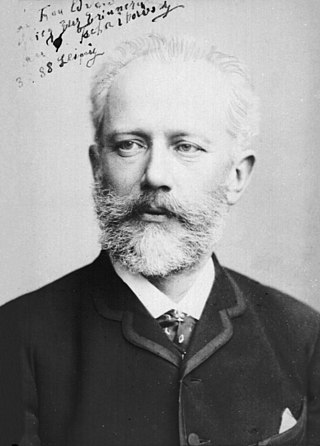
Swan Lake, Op. 20, is a ballet composed by Russian composer Pyotr Ilyich Tchaikovsky in 1875–76. Despite its initial failure, it is now one of the most popular ballets of all time.

The Nutcracker, Op. 71, is an 1892 two-act classical ballet by Pyotr Ilyich Tchaikovsky, set on Christmas Eve at the foot of a Christmas tree in a child's imagination featuring a Nutcracker doll. The plot is an adaptation of Alexandre Dumas' 1844 short story The Nutcracker, itself a retelling of E. T. A. Hoffmann's 1816 short story The Nutcracker and the Mouse King. The ballet's first choreographer was Marius Petipa, with whom Tchaikovsky had worked three years earlier on The Sleeping Beauty, assisted by Lev Ivanov. Although the complete and staged The Nutcracker ballet was not initially as successful as the 20-minute Nutcracker Suite that Tchaikovsky had premiered nine months earlier, it became popular in later years.
The Mariinsky Ballet is the resident classical ballet company of the Mariinsky Theatre in Saint Petersburg, Russia.

Rudi van Dantzig was a Dutch choreographer, company director, and writer. He was a pivotal figure in the rise to world renown of Dutch ballet in the latter half of the twentieth century.
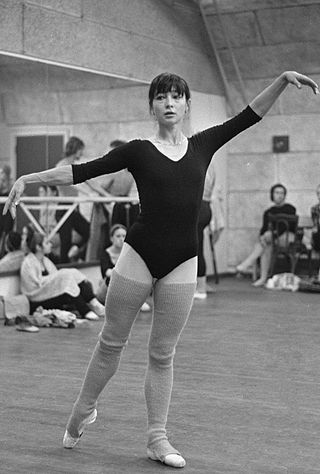
Ekaterina Sergeyevna Maximova was a Soviet and Russian ballerina of the second part of the 20th century who was internationally recognised. She was a prima ballerina of the Bolshoi Theatre for 30 years, a ballet pedagogue, winner of international ballet competitions, Laureate of many prestigious International and Russian awards, a professor in GITIS, Honorary professor at the Moscow State University, Academician of the Russian Academy of Arts, and an Executive Committee member of the Russian Center of Counseil International De La Danse, UNESCO.
Sir Anthony James Dowell is a retired British ballet dancer and a former artistic director of the Royal Ballet. He is widely recognized as one of the great danseurs nobles of the twentieth century.
Attilio Labis was a French ballet dancer and teacher. He was regarded as a star of the Paris Opera.
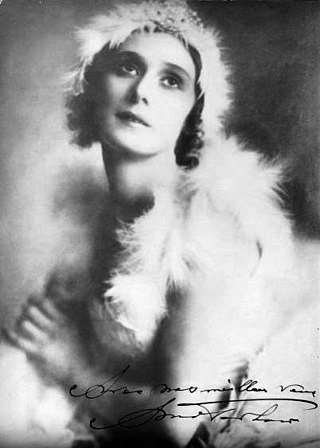
The Dying Swan is a solo dance choreographed by Mikhail Fokine to Camille Saint-Saëns's Le Cygne from Le Carnaval des animaux as a pièce d'occasion for the ballerina Anna Pavlova, who performed it about 4,000 times. The short ballet follows the last moments in the life of a swan, and was first presented in St. Petersburg, Russia in 1905. The ballet has since influenced modern interpretations of Odette in Tchaikovsky's Swan Lake and has inspired non-traditional interpretations as well as various adaptations.
Nadia Nerina was a South African dancer who was "one of the most gifted, versatile, and inspiring ballerinas of The Royal Ballet" during the 1950s and 1960s. She was known "for her technical virtuosity, lightness afoot, effortless-seeming jumps, and joyful charm onstage, especially in comedic roles."
The 1895 Petipa/Ivanov/Drigo revival of Swan Lake is a famous version of the ballet Swan Lake,, . This is a ballet by Pyotr Ilyich Tchaikovsky based on an ancient German legend, presented in either four acts, four scenes, three acts, four scenes or, more rarely, in two acts, four scenes. Originally choreographed by Julius Reisinger to the music of Pyotr Ilyich Tchaikovsky, it was first presented as The Lake of the Swans by the Ballet of the Moscow Imperial Bolshoi Theatre on 20 February/4 March 1877 in Moscow, Russia. Although the ballet is presented in many different versions, most ballet companies today base their stagings both choreographically and musically on this revival by Marius Petipa and Lev Ivanov, staged for the Imperial Ballet, first presented on 15 January/27 January 1895, at the Imperial Mariinsky Theatre in St. Petersburg, Russia instead of the original version.
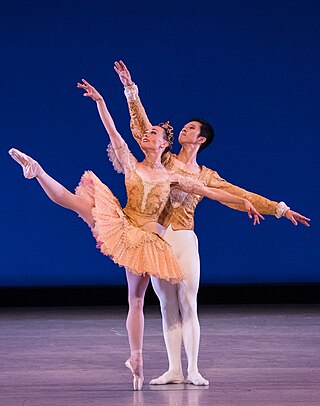
Theme and Variations is a ballet choreographed by George Balanchine to the final movement of Tchaikovsky's Orchestral Suite No. 3. The ballet was made for Ballet Theatre, and premiered on November 26, 1947, at the City Center 55 Street Theater, with the two leads danced by Alicia Alonso and Igor Youskevitch.

Tchaikovsky Pas de Deux is a ballet choreographed by George Balanchine to a composition by Pyotr Ilyich Tchaikovsky originally intended for act 3 of Swan Lake. With costumes by Barbara Karinska and lighting by Jack Owen Brown, it was first presented by New York City Ballet at the City Center of Music and Drama, New York, on 29 March 1960. Robert Irving conducted the New York City Ballet Orchestra. The dancers were Violette Verdy and Conrad Ludlow.

Alexander Gorsky, a Russian ballet choreographer and a contemporary of Marius Petipa, is known for restaging Petipa's classical ballets such as Swan Lake, Don Quixote, and The Nutcracker. Gorsky "sought greater naturalism, realism, and characterization" in ballet. He valued acting skills over bravura technique. His interpretations of ballets were often controversial and he often used artists outside the dance world to create sets and costumes. The victim of deteriorating mental health in his later life, he died in a mental hospital.

Black Swan is a 2010 American psychological horror film directed by Darren Aronofsky from a screenplay by Mark Heyman, John McLaughlin, and Andres Heinz, based on a story by Heinz. The film stars Natalie Portman in the lead role, with Vincent Cassel, Mila Kunis, Barbara Hershey, and Winona Ryder in supporting roles. The plot revolves around a production of Tchaikovsky's Swan Lake by the company of New York City Ballet. The production requires a ballerina to play the innocent and fragile White Swan, for which the committed dancer Nina Sayers (Portman) is a perfect fit, as well as the dark and sensual Black Swan, which are qualities better embodied by the new rival Lily (Kunis). Nina is overwhelmed by a feeling of immense pressure when she finds herself competing for the role, causing her to lose her tenuous grip on reality and descend into madness.
Victor Gsovsky was a Russian ballet dancer, teacher, balletmaster and choreographer.

Galina Olegovna Stepanenko is a Russian ballet teacher. She is a former prima ballerina of the Bolshoi Ballet, and since 2013 has been head of the Bolshoi's ballet troupe.
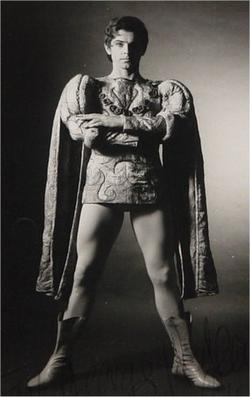
Derek Rencher was a British ballet dancer. A commanding figure among Royal Ballet character dancers for more than four decades, he was probably the most prolific performer in the company's history.
Leonid Mikhailovich Lavrovsky was a Soviet and Russian ballet dancer and choreographer, most famous for choreographing the first full version of Sergei Prokofiev's Romeo and Juliet.
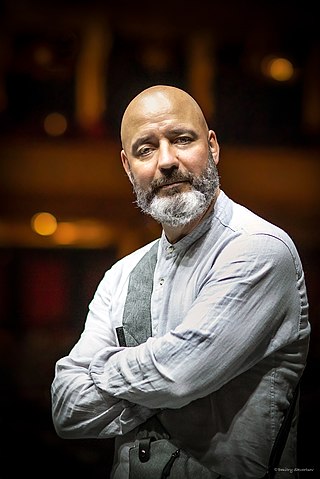
Radu Poklitaru – choreographer-director working in Ukraine and many other countries of the world, the Honoured Worker of Culture of Ukraine (2017), the Shevchenko National Prize of Ukraine winner (2016), The Personality of the Year prize winner (2017), the People's Artist of Moldova (2016), the laureate of numerous international contests, the founder and the chief ballet master of the Kyiv Modern-Ballet Academic Theatre. Professor of the Department of Modern Choreography at the Kyiv National University of Culture and Arts.
References
- ↑ "Biography of Vladimir Pavlovoch Bourmeister (1904-1971)".[ dead link ]
- ↑ "Dance: A swan to die for". Independent. Independent. 8 January 2002. Retrieved 20 June 2020.
- ↑ "Oxford University Press". The Oxford Dictionary of Dance. Oxford University Press. Retrieved 19 March 2016.[ dead link ]